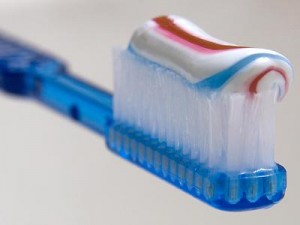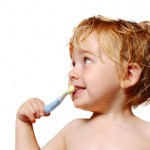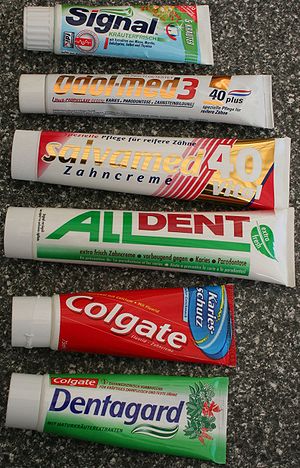Dentifrices and mouthrinses are the major products for routinely administering effective cosmetic and therapeutic agents in the mouth. These products are the most widely used by consumers, generating the largest sales of all dental products. Besides attempting to prevent tooth decay, it is also becoming increasingly common for manufacturers to add therapeutic or preventive agents to reduce gum disease (gingivitis) and tartar (calculus) formation. A few toothpastes also contain desensitizing agents. Continue reading
Tag Archives: toothbrush
Best Toothbrush for Periodontal Disease
Best toothbrush for periodontal disease
The importance of oral hygiene has been highlighted over the years and recently awareness has been created as it is not only for good dental health but one’s overall well-being. Gum disease is a major risk factor and has been associated with serious health conditions, including heart disease, diabetes, strokes, respiratory disease, digestive disorders, pancreatic cancer and preterm low birth weight
babies. It begins with bacteria invading the gums and populating in great amounts destructing the tooth tissues and supporting tissues. If the early stage of gum disease (gingivitis) if left untreated, it can progress to more severe gum disease (periodontitis).
Periodontitis comes with swollen and bleeding gums, recession, tooth sensitivity, root decay, loose tooth leading to tooth loss in advanced cases. The best way for treating gum disease is by regular brushing and flossing. It is essential for one to administer proper brushing techniques with the right toothbrush for the health of their gums and prevent tooth loss as well as fighting against other health challenges. There are various types of toothbrushes available in the market, with newer products seems better than
previous ones. Hence, the confusion arises to select the best toothbrush to care for their teeth and gums. Continue reading
10 Good Reasons to Switch to Electric Toothbrushes
Have you ever considered switching to an electric toothbrush? With electric toothbrushes becoming increasingly common nowadays, many people are considering this option. However, are electric toothbrushes just an unnecessary novelty, or are they really more effective than the conventional toothbrush? Let’s find out.
What Is the Function of a Toothbrush?
A toothbrush is a tool that is used to clean the teeth and to maintain our oral hygiene. Tooth brushing is one of the ways to control plaque level in our mouth , which is mechanically. It can also be done chemically, but mechanical cleaning is the most commonly practiced method around the world. It is also the most fundamental way of removing all the debris in our mouth, in which cannot be done by just using the chemical cleaning method alone. Continue reading
Toothbrushing for Babies
When should you start cleaning your baby’s teeth?
It is a good idea to start cleaning your baby’s mouth even before the eruption of his first deciduous tooth. You can simply wrap a gauze or a wet cloth around your finger and rub it gently over the gums and tongue. This will help remove the milk residue which is left on the tongue surface. Even before tooth eruption, bacteria is present in the baby’s mouth but it usually doesn’t harm the gums. But we cant decide for certain when the baby’s tooth is emerging from the gums. Therefore cleaning the baby’s mouth will protect the erupting tooth from being damaged by the bacteria. This will also make an easier transition into toothbrushing when the child grows. You will have to brush your baby’s teeth until he can hold a toothbrush on his own, which is at 5 to 7 years of age because his motor development has not completed.https://www.intelligentdental.com/category/baby-teeth-2/
The first deciduous teeth start to appear around 6 months of age but sometimes delayed until 15 to 18 months in some healthy babies. You will have to choose a suitable baby toothbrush to brush your baby’s teeth. In the early stages, toothpaste is not necessary because children tend to swallow the toothpaste. Toothpaste contains fluoride, a substance when ingested in large amounts will cause a condition known as fluorosis. Dental fluorosis is common in children between 1 to 4 years old because teeth development is rapid at this stage.
It is important to regularly clean your baby’s teeth. Brush the teeth gently on both the outside and inside surfaces. Just a few strokes of the will do. Vigorous brushing will damage the immature enamel of the baby teeth.Do it twice a day.
Here are some tips on how to make toothbrushing for babies easier, more affective and interesting:
1. Brush with the child
Stick a toothbrush into your mouth while teaching your child to brush his own teeth. Children love to imitate their parents. And once you get him to hold a toothbrush, teach him the proper way to brush and the appropriate amount and type of toothpaste to use.
2. Choose the right toothbrush
Your baby’s toothbrush should be appropriate with his age and is usually indicated on the packaging.Baby’s toothbrush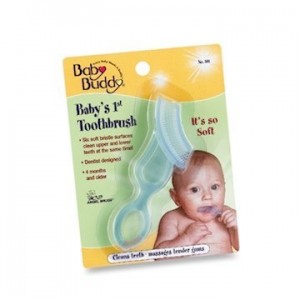 should have soft bristles and a small head which allows to reach all parts of his mouth.The handle should be thick for a firm grip. Replace the toothbrush every 3 months or after the bristles have started to spread out. Find a toothbrush which looks appealing to the child, with conspicuous color, interesting shapes and animal prints.
should have soft bristles and a small head which allows to reach all parts of his mouth.The handle should be thick for a firm grip. Replace the toothbrush every 3 months or after the bristles have started to spread out. Find a toothbrush which looks appealing to the child, with conspicuous color, interesting shapes and animal prints.
3. Choose the appropriate toothpaste
The American Academy of Pediatric Dentistry recommends that fluoridated toothpaste should only be used on children above 2 years old. You should let your child use only a pea sized amount of paste each time he brushes and make sure he spits it out. Swallowing too much toothpaste over time can cause fluoride toxicity and dental fluorosis. Choose children’s toothpaste which comes in various yummy fruity flavors.
4. Make toothbrushing interesting
Children tend to throw tantrum or get cranky when asked to brush his teeth. You can tell a tooth story or bring his toys into the washroom to grab his attention. After all, children love stories and pampering!
How often should you change your toothbrush
How often should you change your toothbrush
Some people can use their toothbrush repeatedly until they misplace it. The average American only change their brushes 1.9 times a year. The American Dental Association recommends that you change your toothbrush at least four times a year, approximately 3 months and every time you are sick. If the bristles of your toothbrush start flaring before three to four months, then you are using too much pressure to brush your teeth. Dentist believes toothbrushes should be thrown out after roughly 40 to 50 uses. Healthy people should change brushes every two weeks. People with gum problems, other oral diseases, or weakened immune systems should change toothbrush more often. People with a respiratory illness or other infectious disease should change their brushes at the beginning of the illness, again when they first feel better, and once again when they are well. Toothbrush replacement should also be practiced every day for patients who are recovering from major surgery because susceptibility to infections is higher at that time.
The easiest way to know when to change your brushes nowadays is to look at the indicators on the toothbrush. Usually the indicators consist of two or three rows of bristles which are blue in color, when the blue color fades; it is time to change a new toothbrush.
Continue reading
Toothbrushing techniques for children with down syndrome
Tooth brushing is indeed a vital daily activity for a good oral health. Besides that, tooth brushing protects the teeth against dental caries and it also helps prevent bad breath and gum disease. Gum disease is a fatal condition as it may lead to serious diseases. Therefore tooth brushing is important in children and special attention is needed to be given to those with disabilities. Continue reading
What is the purpose of toothpaste
Ever tried brushing your teeth without toothpaste? You will be surprised!
Dentifrices – more commonly known as toothpaste, is a type of cleaning medium
which is meant to be used together with a toothbrush to remove soft deposits on tooth surfaces. Formation of soft deposits like dental plaque is inevitable because they are produced by non-harmful bacterial flora which occupies and lives in the mouth of a normal healthy person. In fact, dental plaque provides a suitable habitat for bacteria to multiply and produce acidic by-products which is harmful to our teeth/gums. Hence, the main objective of brushing teeth is to remove such potential harmful cause and
maintain the hygiene of the oral cavity. Continue reading
Oral Health: Relationship between the body and mouth I
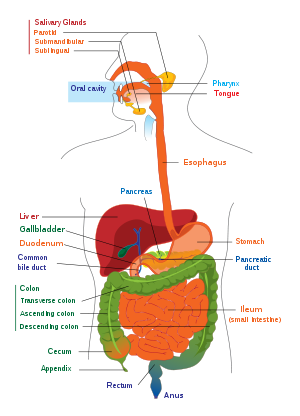
Relationship of the mouth to the body
As stressed in previous articles, oral health can influence our general health and vice verse. In fact, some changes in our general health are often reflected in the oral cavity and at times, can even precede clinical diagnosis of the systemic condition.
What are the common body changes that affect our oral health?
Hormonal changes in the body can often be a source of drastic oral health changes despite patients having fairly good oral hygiene. A hormone imbalance in the body, such which occurs during pregnancy or puberty spurt, can modify behaviors of cells in our body, in particular our immune system. Continue reading
Dental care for babies
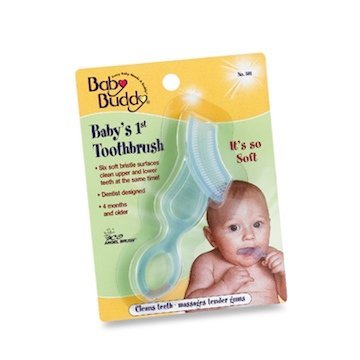 Teething Babies
Teething Babies
Teething is a natural phenomenon that usually occurs with little or no problems. Nevertheless, some infants or teething babies exhibit signs of stress or complications which includes rising of temperature, diarrhea, dehydration, increased salivation, skin eruptions and stomach disturbances. Increased fluid consumption, a non aspirin analgesic and palliative are consisting of the use of teething rings to apply cold and pressure to the affected areas generally reduce the symptoms and results in happier babies. Do not try to puncture or lance the gum tissues to aid the eruption of the baby teeth. If the symptoms mentioned above continue to persist for more than 24 hours , the baby should be examined by a physician to rule out any upper respiratory tract infection and any other disease conditions. Continue reading
